- News
- Reviews
- Bikes
- Accessories
- Accessories - misc
- Computer mounts
- Bags
- Bar ends
- Bike bags & cases
- Bottle cages
- Bottles
- Cameras
- Car racks
- Child seats
- Computers
- Glasses
- GPS units
- Helmets
- Lights - front
- Lights - rear
- Lights - sets
- Locks
- Mirrors
- Mudguards
- Racks
- Pumps & CO2 inflators
- Puncture kits
- Reflectives
- Smart watches
- Stands and racks
- Trailers
- Clothing
- Components
- Bar tape & grips
- Bottom brackets
- Brake & gear cables
- Brake & STI levers
- Brake pads & spares
- Brakes
- Cassettes & freewheels
- Chains
- Chainsets & chainrings
- Derailleurs - front
- Derailleurs - rear
- Forks
- Gear levers & shifters
- Groupsets
- Handlebars & extensions
- Headsets
- Hubs
- Inner tubes
- Pedals
- Quick releases & skewers
- Saddles
- Seatposts
- Stems
- Wheels
- Tyres
- Health, fitness and nutrition
- Tools and workshop
- Miscellaneous
- Cross country mountain bikes
- Tubeless valves
- Buyers Guides
- Features
- Forum
- Recommends
- Podcast
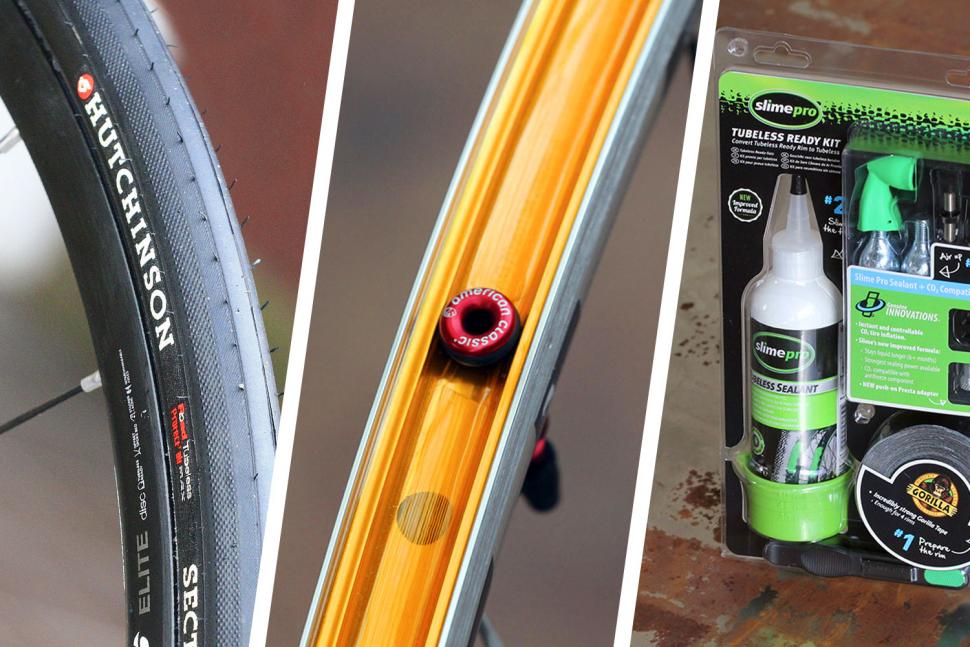 Time to switch to tubeless? August 2018
Time to switch to tubeless? August 2018Should you get tubeless tyres? Are they your best option?
[This article was last updated on November 9, 2019]
Your car has tubeless tyres. Mountain bikes have by-and-large moved over to tubeless tyres in the last decade. And now it’s available for road bikes. Well it has been available for some time, though it’s been slow to catch on; but there’s ever-increasing choice now and a growing number of cyclists are making the leap. Is it time you did too?
But what are the advantages to ditching the inner tubes? Just what are the pros and cons?
Read more: How to fit tubeless tyres
What is tubeless?
Tubeless is basically a clincher tyre inflated onto a rim with no inner tube. Instead of an inner tube holding the air pressure, an airtight chamber is created with a tubeless-specific tyre, developed with a special (commonly carbon) bead, and a compatible rim. The tyre bead locks into the rim and forms an airtight seal that maintains the pressure.
Road tubeless was first brought to market by Hutchinson and Shimano in 2006 (though Mavic and Michelin had a stab earlier in 2004) but it’s fair to say it wasn’t immediately a runaway success.
Why is that? For starters, most professional riders don’t use tubeless, which for a lot of cyclists is enough reason not to use it. Tubular tyres are still dominant in the professional peloton because it’s a weight obsessed sport, and tubulars still offer the lightest setup. It’s also because a tubular stays on the rim during a rapid loss of air. Fitting a tubular tyre is a lot of hassle though, and much more tricky than fitting a tubeless tyre.
Clincher tyres with inner tubes are still popular because they're simple and work well. Most people can easily change an inner tube and punctures can (if you’re lucky) be quite rare. There’s also no issue with compatibility. Any tyre will fit to any rim, and the market is awash with a staggering choice of both.
The last holdouts enter the fray
The biggest news in tubeless tyres is the recent arrival in the sector of tyre giants Continental and Michelin, the last major tyre manufacturers to announce tubeless tyres. Continental came in with a tubeless version of their new top-end road tyre, the Grand Prix 5000, and followed up with gravel tyres. Michelin have launched a tubeless member of their Power series, the Power Road, an all-round racing and training tyre.
But you have to wonder if those two tyre manufacturers would have got into tubeless without the invovement of wheel maker Mavic, which announced its Road UST (Universal System Tubeless) wheel/tyre system in June 2017.
Mavic says Road UST is easier to use and safer than previous tubeless systems and has put its production facilities where its mouth is, with a range of 15 wheels.
The difference between Mavic’s system and others is that there’s tight control over production variances, Mavic says. Variation in tyre bead stiffness and size affects safety as well as ease of installation and removal. Keeping the tolerances small is crucial to the success of the system.
Mavic says that Road UST is going through the approval process to become a standard recognised by both ISO (International Organization for Standardization) and ETRTO (European Tyre and Rim Technical Organisation) working groups.
Read more: Buyer's guide to tubeless tyres — all your options in new technology rubber
What are the advantages of tubeless?
Why go tubeless at all then? The main advantage, and it’s a big one, is the substantially reduced risk of puncturing. There is no inner tube to puncture, whether from sharp objects penetrating the tyre or, more rarely, pinch flats when the inner tube is squashed between the rim and tyre.
To get the best out of tubeless, and to provide the extra puncture resistance in the absence of the inner tube, there is one extra ingredient that is needed: liquid sealant. This sloshes around inside the tyre and then reacts with air when the tyre casing is punctured, and plugs the hole. It can seal most small holes caused by flint or thorns and while you might suffer a small drop in pressure, you can continue riding.
They’re faster. Because there aren't two layers of material (tyre and tube) pressing against each other and the tyre can deform more easily, the rolling resistance is often claimed to be lower. If German tyre company Schwalbe's claims are to be believed, its latest One Pro tubeless tyre is the fastest tyre it has ever manufactured. It could be just saying this to sell tyres of course, but it still produces top-end clincher and tubular tyres, so it’s not like it has abandoned traditional tyre technology just yet.
Review: Schwalbe One Tubeless tyres
Moreover, with no inner tube and therefore no risk of pinch punctures, a tubeless tyre can be run at a lower pressure. This provides increased comfort as there is more cushioning from the tyre. Tubeless tyres, in our experience, provide exceptional comfort with a compliant and supple ride that surpasses most clincher tyre and inner tube combinations.
However, while this ability to run lower pressures is appealing to mountain bikers, who appreciate the increased grip and elimination of pinch flats, traditional road cyclists are unlikely to be interested in dropping pressure in narrow tyres. If your track pump only knows 120 psi, then the advantages of tubeless might be lost on you.
In our experience, a tubeless tyre is best run 10-20 psi lower than an equivalent clincher tyre with no degradation in performance. As the trend moves towards wider tyres though, being able to safely run reduced pressures makes a lot more sense. The prevalence of endurance bikes with 28mm and wider tyres, and gravel and adventure bikes with even wider tyres, make a strong argument for tubeless.
Are there any downsides?
Unfortunately, there are a few downsides to converting to road tubeless. You don't have quite as wide a choice of wheels and tyres, but that has improved dramatically in the last couple of years. Many wheel manufacturers now offer tubeless compatible wheelsets, with some providing dual compatibility with regular clincher tyres, providing an ideal upgrade path. If you’ve bought a new bike recently, it might very well have tubeless-ready rims.
Review: Stan's NoTubes Alpha 340 Wheels
While wheel choice has improved, tyre choice is still a bit restricted and is really the big hurdle to converting to tubeless. The tyre company showing the most interest, and commitment, is German company Schwalbe. I’ve been really impressed with their recent tyres, and there’s very little weight penalty or difference in ride quality. Other choices include Vittoria, Bontrager, but so far big players such as Continental and Michelin have shown little interest in offering tubeless tyres.
Most critically, installing a tubeless tyre isn’t quite as straightforward as popping an inner tube in. That’s not helped by a lack of a single unified standard that all tyre and rim manufacturers adhere to, leading to some compatibility issues between certain combinations of rim and tyre. As well as a tubeless tyre, you need a compatible rim which might involve fitting a special rim strip, a tubeless valve (and it needs to be long enough and threaded so you can get the pump on it) and a bottle of sealant.
If you’re upgrading it’s quite a costly exercise. If your bike has tubeless wheels when you’re in luck as you just need the tyres, valves and sealant. Some manufacturers are starting to sell bikes with tubeless-ready tyres and even supply the valves, so making the tubeless conversion is much less costly. The benefits however might outweigh the initial outlay - and you’ll save money on inner tubes.
A tubeless tyre isn’t invincible. The sealant can deal with most smaller holes but anything big, like a slash or cut, will require you to fit an inner tube, so you still need to carry a spare or two. To be fair to tubeless, any cut of a reasonable size would also cause a puncture in a tubed setup.
Converting to tubeless: a brief guide
If you like the sound of tubeless, what do you need?
Read more: Reviews of tubeless tyres, wheels and accessories
You need tubeless compatible rims. There is now a lot of choice (Shimano, Campagnolo, American Classic, Stan’s etc) and they either come with a rim bed that doesn’t have any spoke holes, or a rim strip ready fitted. With some tubeless ready wheels you need to remove the basic rim tape and install a special rim strip. This makes the rim airtight.
Review: Bontrager Affinity Elite Road Disc wheelset
Then you need a tubeless tyre. Schwalbe is arguably leading the way at the moment, with the One Pro race tyre but also wider options for the emerging gravel market. Vittoria, Bontrager, and Hutchinson also offer tubeless ready tyres.
Review: Hutchinson Sector 28mm tubeless tyre
While it is possible to bodge a tubeless set-up with a regular clincher tyre and non-tubeless rim, it really isn’t recommended and could be potentially dangerous. Tubeless tyres are designed to ensure the tyre bead locks securely into the rim so it can't dislodge at high pressure, which is something you definitely don’t want to happen. This is the critical element of a successful tubeless setup and is why some companies haven’t developed a tyre yet. You might get away with regular rims but you definitely need proper tubeless tyres.
A regular tyre uses an aramid bead, and without an inner tube, can blow off the rim at high pressure. Tubeless tyres use a non-stretch carbon fibre bead — this was the big breakthrough by Hutchinson — that prevents the tyre blowing off the rim.
Tubeless valves. These are standalone valves with a rubber bung on one end that butts up against the inside of the rim, and a locking nut that tightens the valve onto the rim. There are many different makes of tubeless valve, our recommendation is to get one that is compatible with your rim. Look for a removable core - this can make inflating and adding sealant easier, and a lots of thread to screw a track pump onto. The valve needs to be long enough for the depth of your rim.
And don’t forget a bottle of sealant. There is plenty of choice on the market and it’s more or less the same stuff. The sealant should remain liquid in the tyre for up to six months, provided you have no punctures that allow it to escape during that time. Some sealants are 100% free of ammonium so is environmentally harmless.
Bontrager offers an upgrade kit (it’s pricey though) that includes everything you need to convert to tubeless, bar the wheels. It includes tyres, rim strips, valves and sealant.
Another option is the Slime Pro Tubeless Ready Kit, which provides a bottle of sealant, a roll of rim tape, tubeless valve, tyres levers and a CO2 canister for inflating the tyres. It aims to allow you to use a regular non-tubeless rim but you must use a proper tubeless tyre.
See our in-depth guide to fitting tubeless tyres
Should you convert to tubeless?
Tubeless still has a little way to go before it is as universal as it is in the mountain bike world. For tubeless to really take over from conventional clincher tyres, the installation process needs to be much easier, as at the moment it requires an investment of time and expertise. It’s also costly, especially if you need to factor in the cost of new wheels and tyres.
Tubeless also needs commitment from other tyre and wheel manufacturers to widen the choice, and there needs to be a common standard to provide the compatibility to eliminate the current installation woes that can create a sour first experience of road tubeless. One thing is for sure, people that have converted to tubeless have become fans, as once you experience it, it’s very hard to go back.
There are clear benefits to tubeless (reduced flats, lower pressures, ride quality and they’re faster) but it won’t save you any weight. However, if you’re prepared to invest the time, and money, in converting to tubeless, you probably won’t look back. It won’t be for everyone, but tubeless is here to stay and its future looks bright if our experience is anything to go by.
David worked on the road.cc tech team from 2012-2020. Previously he was editor of Bikemagic.com and before that staff writer at RCUK. He's a seasoned cyclist of all disciplines, from road to mountain biking, touring to cyclo-cross, he only wishes he had time to ride them all. He's mildly competitive, though he'll never admit it, and is a frequent road racer but is too lazy to do really well. He currently resides in the Cotswolds, and you can now find him over on his own YouTube channel David Arthur - Just Ride Bikes.
Latest Comments
- stonojnr 2 sec ago
ITVs TdF coverage is not disappearing because of a Discovery land grab....
- Rendel Harris 14 min 47 sec ago
Wow, you've got a dynamo front wheel. They're pretty expensive and you must have had quite a good one for it to be worth trying to pursue someone...
- chrisonabike 18 min 44 sec ago
Currently I think the last thing we need is to whip up demand for more classes of e-things. (They had exemptions for ICE scooters due to history...
- brooksby 54 min 40 sec ago
Nah - she doesn't read this site
- Velophaart_95 1 hour 2 min ago
I'm tempted by the 105 Di2 version for £2,500.......but then I looked at the geometry; the stack is far too low.........it will have to be a...
- chrisonabike 2 hours 8 min ago
If it even goes to court, in Scotland you can walk straight out again with a defence like "I don't remember what happened". Oh - so you didn't...
- chrisonabike 2 hours 19 min ago
Completely agree. (Not a woman so this is just my take)....
- mdavidford 4 hours 21 min ago
Confusing. The description on their product page gives the 56% merino figure quoted above. But the product details bit then gives different figures...
- Toffee 5 hours 57 min ago
I hope they do expand this out to some of the lesser framesets they offer. One of the big issues I have with buying a Canyon is the incredibly...
- Joe Bloggs 6 hours 3 min ago
I would be very wary about buying the cleats typically seen on Ebay if you have X series pedals. The cleats I see there are for the Zero range,...
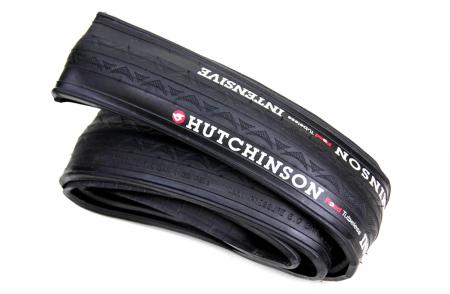

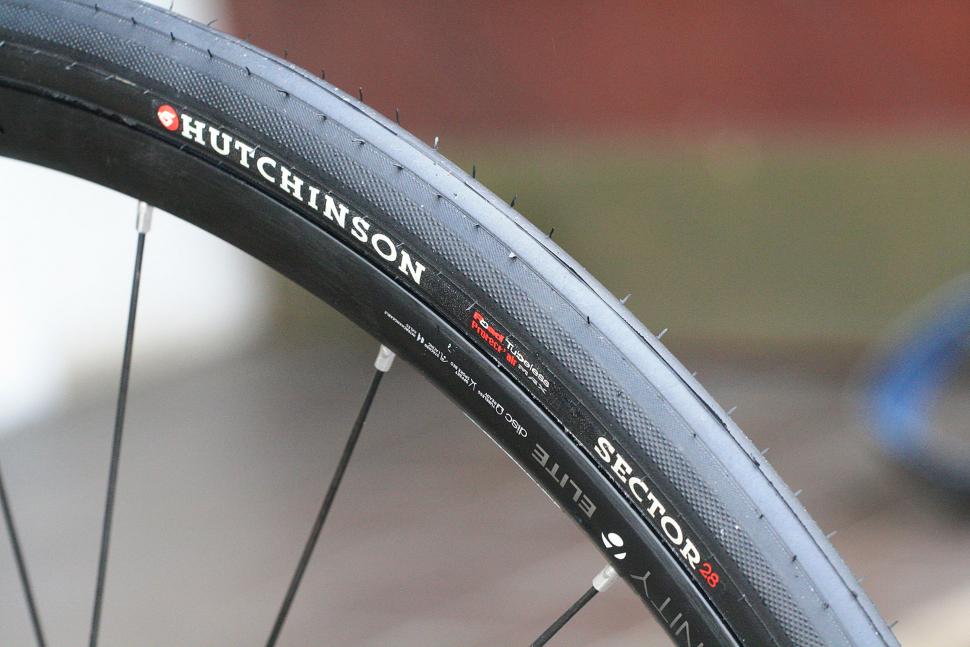

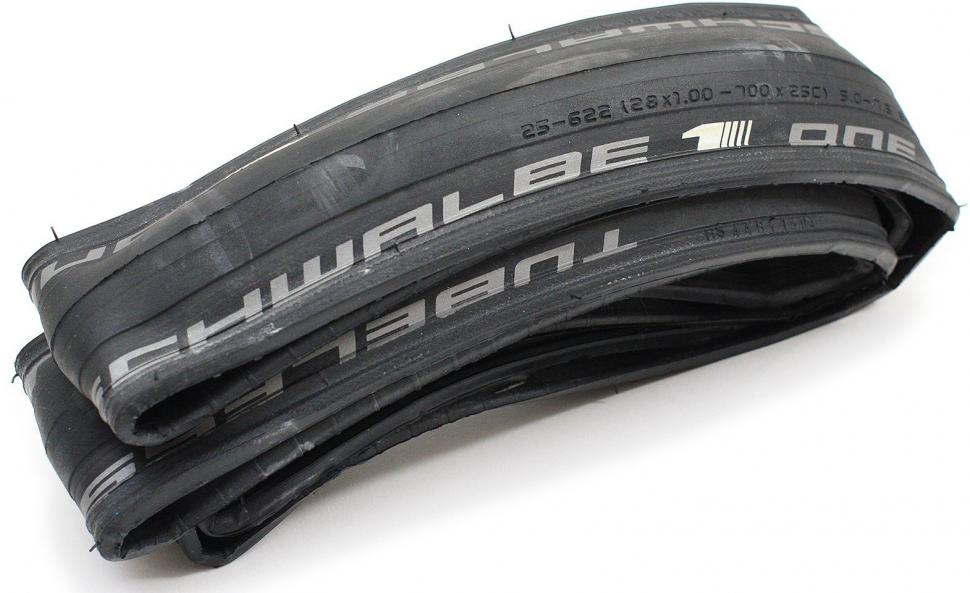
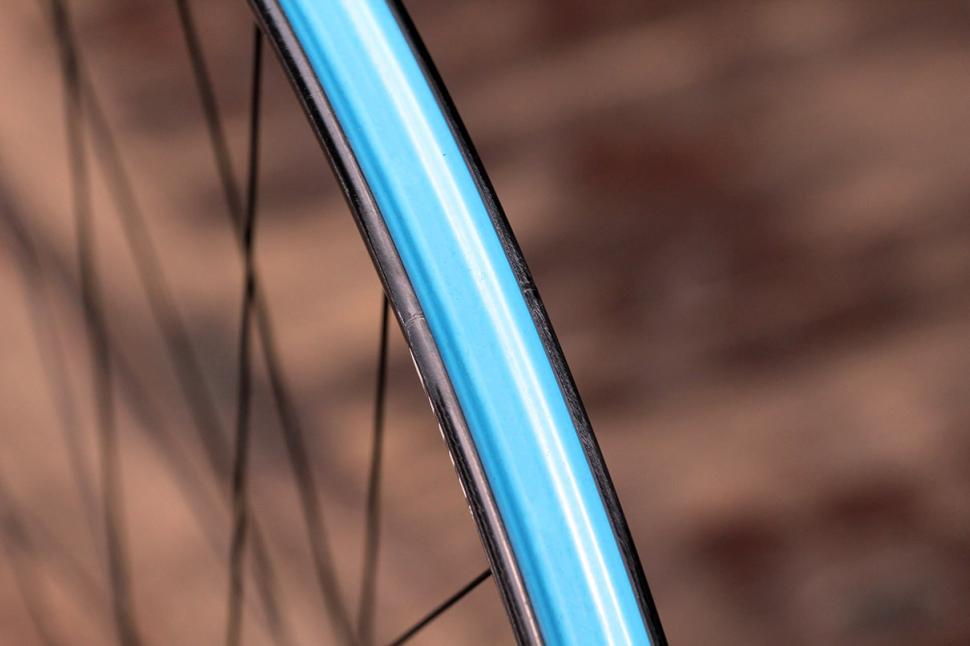

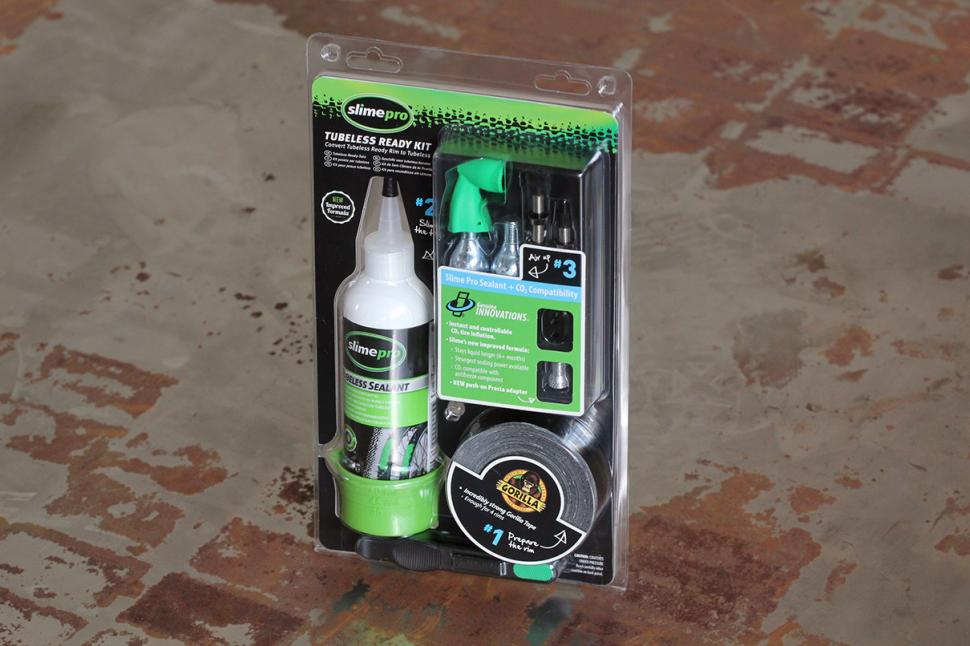
Add new comment
88 comments
Tubless is really expensive and time consuming, especially if like many of us you maintain a small fleet of bikes.
Checking sealant condition and topping up every 4 months is a faff and very expensive. I get through a £20 bottle of sealant every 10 months for three bikes, in addition to time taken unseating 6 tyres, pouring more money milk in and reseating/sealing every 4 months.
When all I had to do before was pump up occasionally and maybe replace a £3 tube once or twice a year. Aaagh!
I think no-one has mentioned the entertainment of tubeless ready rims, but using tubes, and the satisfying twin noise when the beads seat. I have no intention of going tubeless.
A beautiful 80k ride in the sunshine today. Noticed a bit of sealant on my saddle bag at the coffee stop. Gave the tyre a quick squeeze to check the pressure and thought no more of it.
That's why I run tubeless.
This article isn't aging well. What's the current (checks sundial...May 2022) split between tubes, tubular and tubeless in the pro peloton?
About choice of wheels and tyres, I'd say that if you were looking to upgrade to a nice new carbon wheel set, your choice is actually broader with tubeless (although hookless maybe complicates that).
And Mavic UST...is that still a thing?
Up until now(I'm trade BTW) I would usually say....off road only....road don't bother.... Now..... I like to road test stuff before handing out advise to customers, so I 've run Gravelking SK and AC's on Tubeless for the gravel bike....super.... I also used the Mariposa rim strips on the Mavic wheels I put the GK AC's on .....brilliant way to convert non tubeless to tubeless, works first time and easy, better than messing with rubbish tubeless rim tape and really....cheaper dare I say. I have now gone Tubeless with the latest Schwalbe One TLE Addix on the road bike(a customer has been on S ones for a few years with various outcomes but now with the Addix version he's happy. So far these TLE tan walls for me are going well, ride nice, lower pressures and were great in the Yorkshire Dales as well as locally in Cambridgeshire. Been out with a couple of customers today on a Gravel ride.... no one had a puncture on the route (much was stoney ground) and it was 2 tubed and 2 tubeless...... Now I've done real time testing.... rather than cycle press/distributer/manufacturer hype...... Tubeless has come of age....if you want it
No thanks
"Updated May 28, 2022" ?! Continental and Michelin certainly do make road tubeless and this article is full of other out of date information. Maybe actually read the article when you're updating it
PS. My 2c- road tubeless is excellent if you have the right wheels and tyres. Very easy setup with Zipp rims and Schwalbe tyres. But, it can be a nightmare to set up with poor quality tyres/rims.
Now we have to work in feet and inches, what size tyres do I need to make tubeless work?
I've not had much luck with tubeless. Current tyre 'weeps' a tiny amount of sealant. I have tried 2 types and same issue.
Swapped to a used tyre I had patched on the inside and could not seat the tyre despite copious washing up liquid. Didn't fancy getting another pump or co2, so decided to try tubolito inner tube instead.
You must be broke, spending all that money on sealant! It equates to at least 2 bucks a month! It's a minor faff checking sealant in tyres but you're probably checking tyre pressure and tyre condition regularly anyway so checking sealant will take all of 5 minutes longer.
Quick tip: rather than unseating tyres to top up sealant, which I acknowledge is a pain in the @rse, deflate the tyre, unscrew the valve-core and use a 20ml syringe with 20cm of silicone pipe attached to the end. Pop the pipe over the now-empty valve stem, poour some sealant into the syringe and squeeze away. 20ml per couple of months ought to keep you topped up.
OK so tubeless tyres can be fiddly to fit (but so can open tubular clinchers, for example) and do require a little extra maintenance but for me, the almost complete absence of punctures, the added comfort from lower pressures and the noticeable-reduced rolling resistance outweight the minor quibbles.
Watch me get a puncture on my next ride . . .
This f*king country. Schools have been teaching metric since 1970. I was there and I cannot tell you what a relief it was, as a child, to ditch stupid, useless imperial units (and doesn't that name explain everything) and go metric.
Where does it weep the sealant from? Your difficulty seating another tyre suggests to me that your rim/rim-tape/valve is leaking air.
Ask most kids nowadays how many 16ths in an inch and they'll look at you blankly.
WTF is wrong with 'metric' ... hell, its been in use over 50 years, why do we still even bother calling it metric.*
Oh ... yeah ... thats right; there's only 3 countries in the world that use the Imperial sytem, so I guess we'll be keeping up with the massess.
From the main bit where it contacts the road. I had caffelatex and stans race but in the morning, the tyre would have wet patches. Then when I got to about 15mph, the pressure must have forced a bit of sealant out as I could hear this annnoying noise like there was something stuck to the tyre. I did flirt with making the holes bigger, but I thought I'd end up with too many.
The michelin power road were hard to get on. I think I had a 20 year old track pump the first time, but the head eventually gave out and I have an sks one, but it won't push enought air in and it goes out of the schrader bit instead (unless it's faulty?). Hence thinking I need co2 or a different pump.
I always thought that a 16th was a measure of weight
That's odd - it sounds like the sealant is oozing out from the tyre itself.
The closest that I've seen is some bubbling out of the sidewall when the level of sealant was low, but I think that was a "tubeless ready" tyre. Tubeless Ready means that the tyre is slightly porous and needs the sealant in it to work, whereas proper tubeless tyres can be installed and inflated without sealant if you're lucky (I usually try a dry-seating of the tyre before putting in sealant).
I can't think why you'd get a noise from the tyre unless you'd left something inside it. I've had little balls of sealant trapped in a deep rim but it doesn't sound like what you describe.
If they can't work out how many 16ths in... anything, I think there are bigger problems than what system of weights and measures they're using.
You are doing it wrong if you unseat the tyres. Get a syringe, undo the valve, suck sealant out to have a look-see and estimate the quantity and quality. Squirt back in, top up.
In the UK, sealant lasts for ages. Lots of manufacturers and articles seem to be written thinking about riding in the California sunshine. Sealant longevity really only gets to be a problem in hot weather, whatever that is.
Add in discs so you don't accidentally wreck the sidewall with a brake that has crept up due to wear, I've only practised my tyre changing for other people in the last couple of years.
The funny thing is, thanks to the dominance of the UK bike industry back in the day, the vast majority of components have an underlying size that is imperial, seat tubes, head sets, chains and cogs, 26" wheels 29ers. The main metrication on bikes has been the adoption of metric threads as opposed to the imperial threads (or which there are several standards).
The MilkIt valves are designed to make syringing easier and although they're expensive they do work well.
Although sealant may last for ages, it also depends on what condition your tyres are in and whether the sealant has been plugging a few holes. I think 2-3 months is about average for me between topping up.
My rims are 27.5inches with an internal width of 45mm.
Or 26 inch with 17mm.
I saw them some years ago (2015 bike show?) and was put off by the cost, but the general idea of the syringe was not forgotten.
Since then I've decided that removing the valve is a good thing. A valve is a hole that sealant wants to seal, and I've had a valve leak due to sealant, so although I pump in the top half of the rim, removing the core and giving it a clean on a very occasional basis will avoid valve jams due to sealant
Aren't the inches an approximate value ?
The MilkIts have a little rubber seal at the bottom for stopping sealant fouling the valve.
A syringe and a little flexible tube which fits on the end small enough to go through a valve = very useful for sucking out sealant to see if it's gone off. (Tip if it's gone watery and see through or brown - it's useless.) Before I got one of those.. it was guesswork and 'sealant anxiety'.
Also those milkit kits are nice but pricey, lots of syringes available from other brands, however there's nowt special about them apart from the attachments which could easily be heath robinson'ed.
You may have a point in the UK if you go back more than 50 years - but the wealth of info on Sheldon Brown's site suggests it may just have been "less imports" everywhere back in the day. The bike industry is of course noted for its love of standardisation...
So... as this article bobs back to the top of the page, is there a new bit in there?
Yes and no...
Just needs topping up every couple of months.
Edit oops - just seen 2019, yikes, it'll be proper gummed up by now
Sharing my experience. n=1.
So I bought a Pinnacle Arkose R2 with tubeless ready Exposure 30C tyres. I cycle in London, initially to commute but now that my company has gone bankrupted, I use it to cycle around Richmond, Hampton and further south.
First two weeks of commuting with the tyres set as tube: two punctures. I got Decathlon to fix them because I just could not remove the tyre from the wheel. A real nightmare!
I then decided to convert the tyres to Tubeless. Drop the tyres at Evans, at first they could not convert one of the tyres, but they eventually did it (weird!). Set with Muc-off sealant.
After a few months I decided to move back to tubes, using Continental 4 seasons (size 28). So far so good but the riding is slightly better with the exposure (not sure if that's due to tube or tubeless), it just feels smoother with the Exposure.
I am still in two minds. Tubeless is more involved in maintenance (change the sealant every 6 months) and requires a special pump to set on the wheel. I also had recurrint events of "sealant squirts" jetting out of the front tyre which dirty the bike (and it's not easy to remove dried sealant) - this is not a nice feeling.
On the plus side: some of those "squirt" events did not even require a re-pump of the tyre, allowing me to carry on! I once had such an event that the pressure when done to near flat, I figured I lost most of the sealant by then, I refilled the tyre with sealant from the Muc-off pouch, repump the tyre using a basic pump and it sealed. So in that case this was easier than fitting a tube.
When I convert back to tube, it took me a while to remove the tyre from the wheel, at least for the front wheel, then for the back wheel I decided to really push out most of the air and sealant away from the tyre (by removing the valve) and it seems to make the tyre removal way easier (or it's a coincidence).
I might go back to tubeless one day, probably with a more puncture resistant tyre...but I will only consider this if my 4 seasons is failing me.
Pages